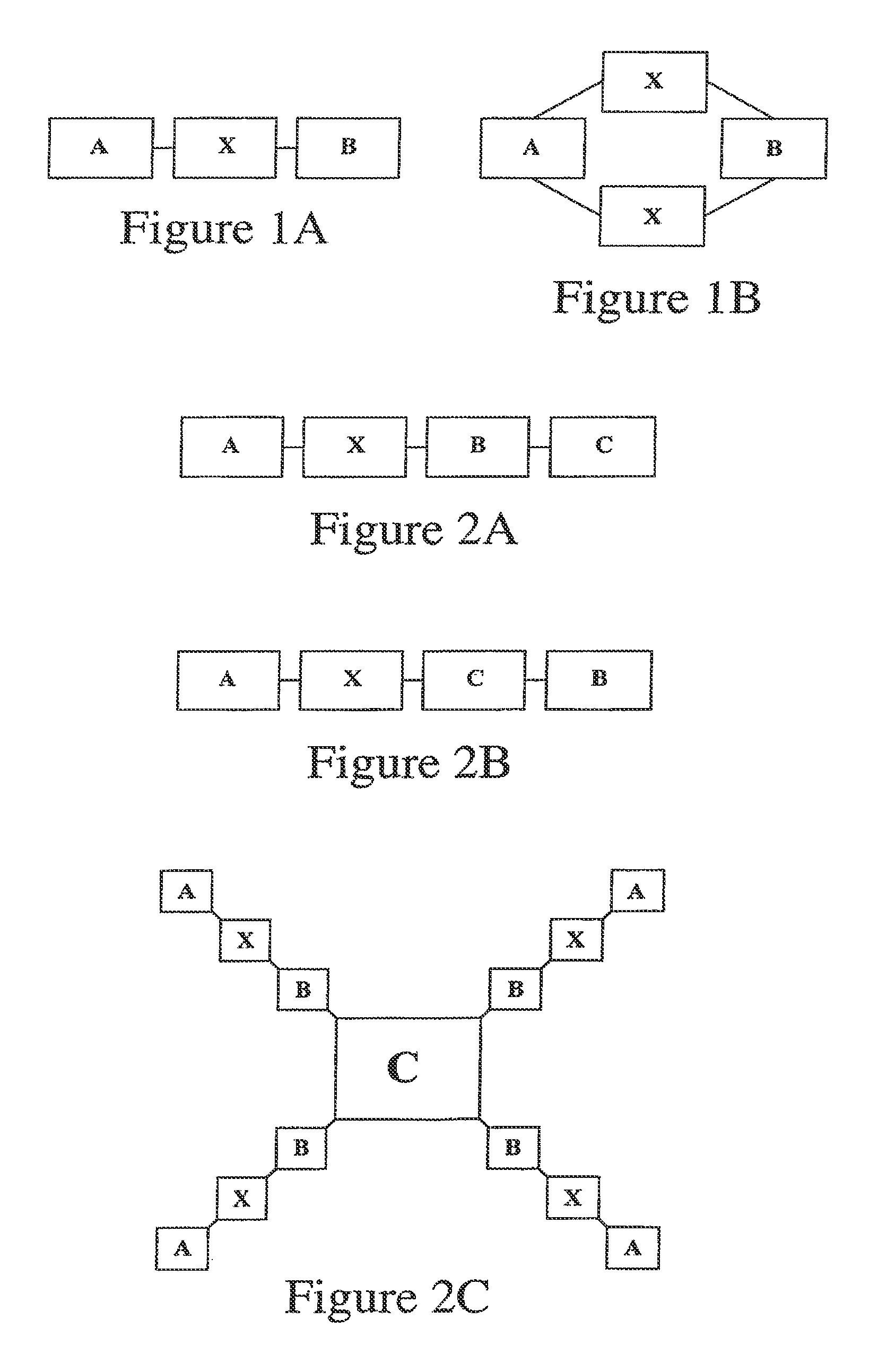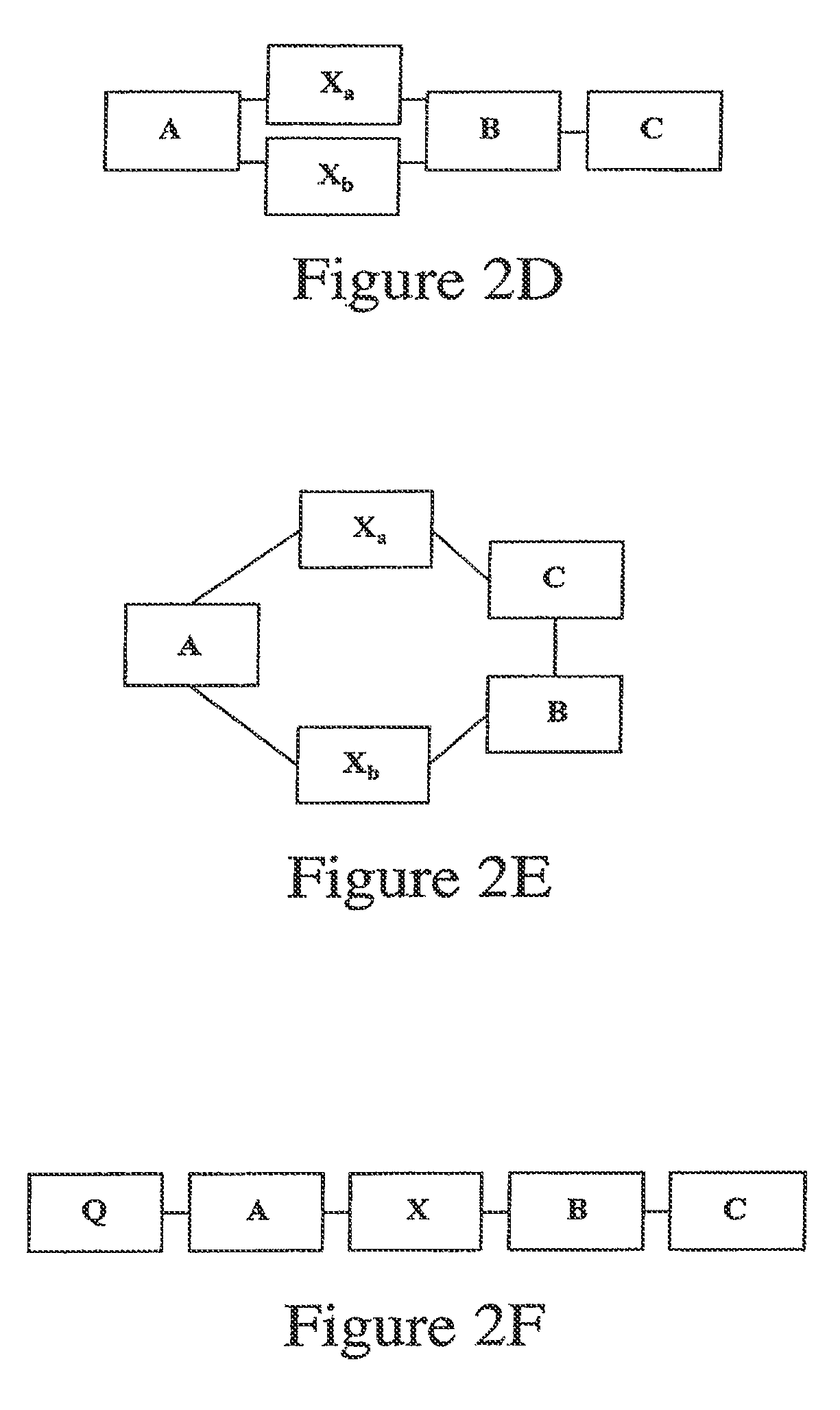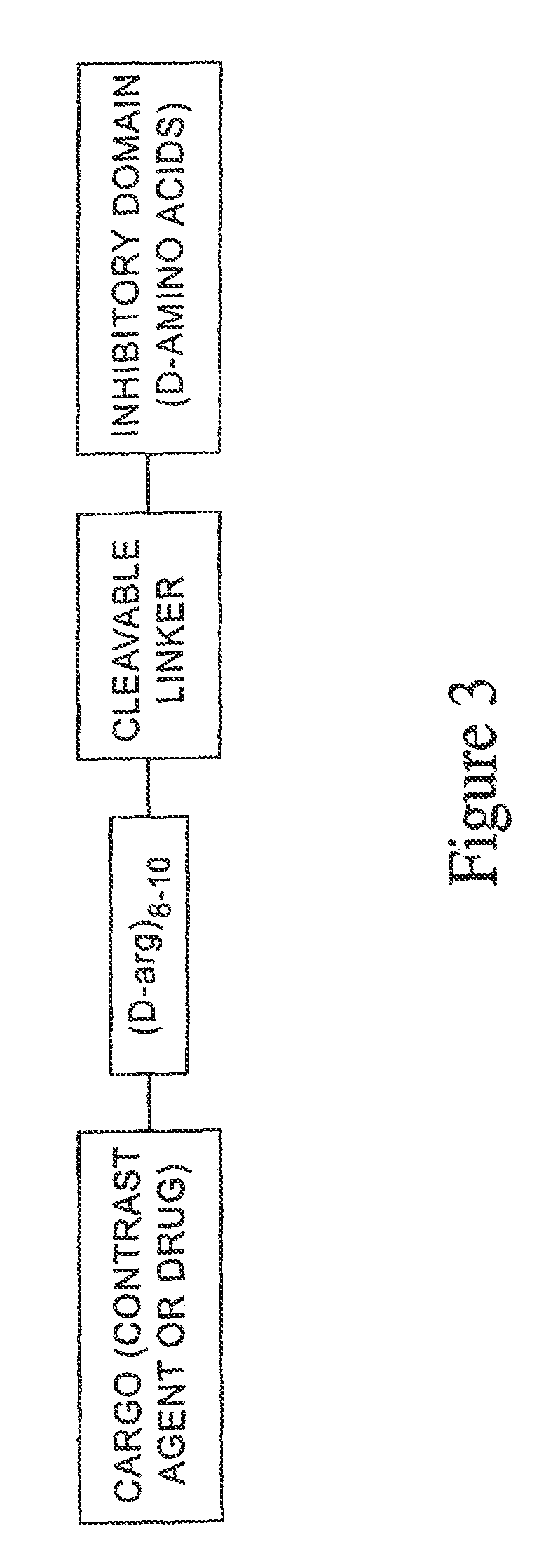Peptides whose uptake by cells is controllable
a technology of peptides and cells, applied in the field of peptides whose uptake by cells is controllable, can solve the problems of difficult control and regulation of such transport, and make it difficult to deliver markers, drugs, nucleic acids, etc., and achieve the effect of reducing possible side effects and increasing the effectiveness of treatmen
- Summary
- Abstract
- Description
- Claims
- Application Information
AI Technical Summary
Benefits of technology
Problems solved by technology
Method used
Image
Examples
example 1
Peptide Synthesis
[0093]A number of peptides whose cell uptake could be modulated were synthesized. In the following, the following symbols, where used, are used with the indicated meanings: Fl=fluorescein; aca=aminocaproic acid linker (—HN—(CH2)5—CO—), C=L-cysteine, E=L-glutamate, R=L-arginine, D=L-aspartate, K=L-lysine, A=L-alanine, r=D-arginine, c=D-cysteine, e=D-glutamate, P=L-proline, L=L-leucine, U=glycine, V=valine, I=isoleucine, M=methionine, F=phenylalanine, Y=tyrosine, W=tryptophan, H=histidine, Q=glutamine, N=asparagine, S=serine, and T=threonine. In sequences discussed below, lower case letters indicate the D isomer of the amino acid.
[0094]Peptides were synthesized on a peptide synthesizer (Pioneer Peptide Synthesis System by Applied Biosystems) using solid phase synthesis method and commercial available Fmoc amino acids, resins, and the other reagents. The peptides were cleaved with TFA / thioanisole / triisopropylsilane or TFA / thioanisole / triisopropylsilane / ethanedithiol. P...
example 2
Peptide Cleavage by Enterokinase
[0095]10 μl 0.38 mM peptide dissolved in water stock solution was added to 10 μl 1 U / μl Enterokinase (Invitrogen, EKmax) and the cleavage progress was monitored by injecting 5 μl of the reaction mixture on HPLC monitored at 440 nm. The peptide was designed to be a substrate for enterokinase, with cleavage by enterokinase expected between the K and A residues. A High Performance Liquid Chromatography (HPLC) chromatogram of the peptide EDDDDKA-aca-R9-aca-C(Fl)-CONH2 (SEQ ID NO: 3) (before cleavage of linker portion between K and A) is illustrated in FIG. 6A. (The term “R9” indicates a sequence of nine arginines; SEQ ID NO:47.) The HPLC chromatograms showed that the peptide was cleaved almost completely after 15 min reaction time. FIG. 6B illustrates the HPLC chromatogram of the peptide of FIG. 6A after cleavage by enterokinase. The new peak was collected and determined on a mass spectrometer. The determined mass corresponded (as expected) to cleavage be...
example 3
Peptides Having Acidic Portions to Veto Uptake
[0096]Peptide molecules having features of the invention, having fluorescent cargo moieties connected to basic portions (having multiple arginine residues), these latter being linked by cleavable linkers to an acidic portion (having multiple glutamate residues), were synthesized and tested for ability to deliver cargo into cells. Peptides showing ability of oligoglutamates to veto oligoarginine-mediated cellular uptake include:
[0097]
(SEQ ID NO: 5)Fl-aca-CRRRRRRRRR-aca-EEEEEEEEEC-CONH2 (linear or cyclic, 5-47)(SEQ ID NO: 6)Fl-aca-CEEEE-aca-RRRRRRRRRC-CONH2 (linear or cyclic, 6-10)
[0098]Peptides showing cleavage-dependent uptake include:
[0099]
(SEQ ID NO: 7)H2N-EEEEEDDDDKA-aca-RRRRRRRRR-aca-C(Fl)-CONH2(6-14, Enterokinase substrate, cleaved afterDDDDK; SEQ ID NO: 56)(SEQ ID NO: 8)H2N-EDDDDKA-aca-RRRRRRRRR-aca-C(Fl)-CONH2(6-16, Enterokinase substrate)(SEQ ID NO: 9)H2N-EEEEEDDDDKARRRRRRRRR-aca-C(Fl)-CONH2(6-27, Enter...
PUM
| Property | Measurement | Unit |
|---|---|---|
| pH | aaaaa | aaaaa |
| pH | aaaaa | aaaaa |
| molecular weight | aaaaa | aaaaa |
Abstract
Description
Claims
Application Information
 Login to View More
Login to View More - R&D
- Intellectual Property
- Life Sciences
- Materials
- Tech Scout
- Unparalleled Data Quality
- Higher Quality Content
- 60% Fewer Hallucinations
Browse by: Latest US Patents, China's latest patents, Technical Efficacy Thesaurus, Application Domain, Technology Topic, Popular Technical Reports.
© 2025 PatSnap. All rights reserved.Legal|Privacy policy|Modern Slavery Act Transparency Statement|Sitemap|About US| Contact US: help@patsnap.com



